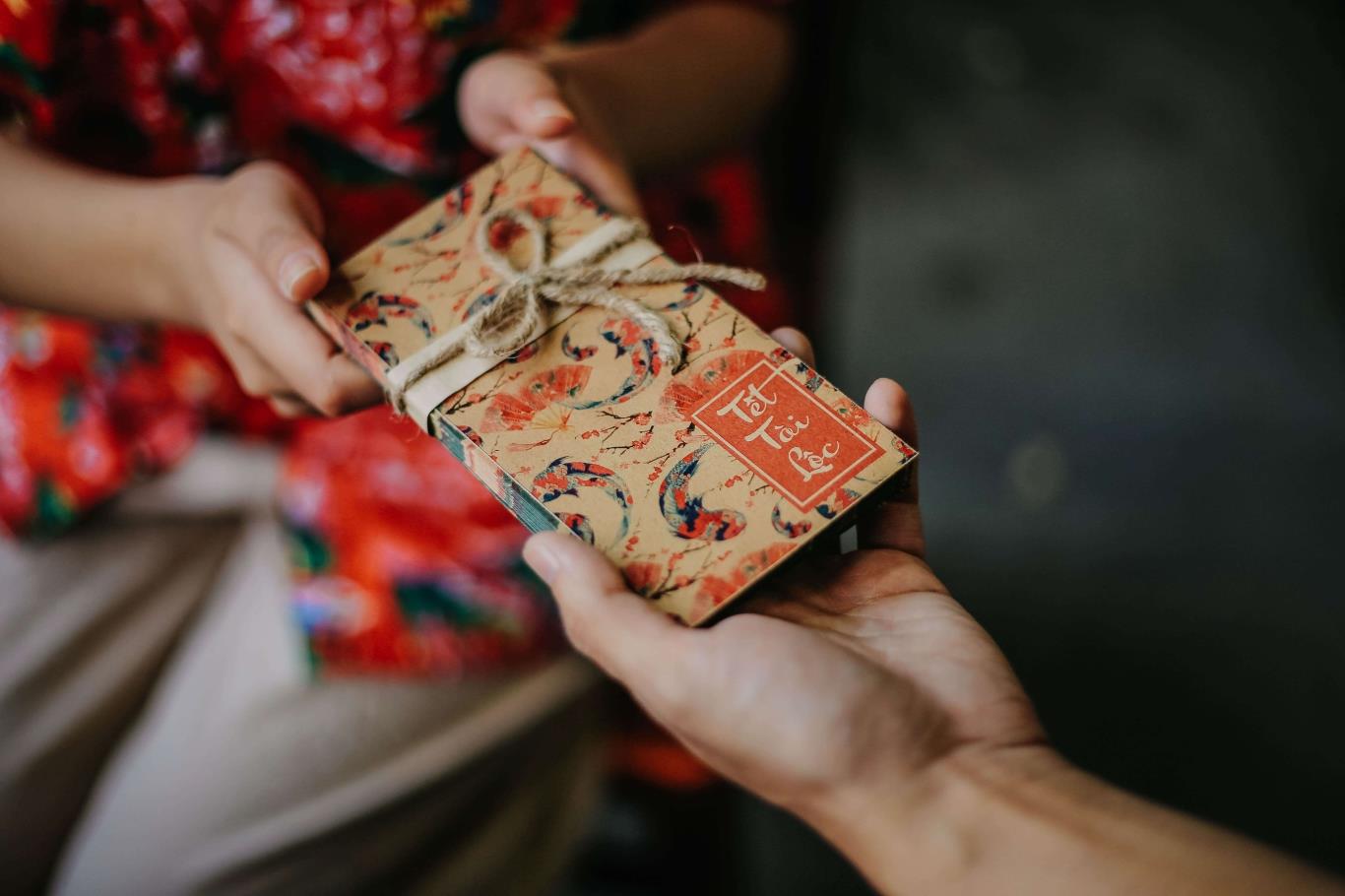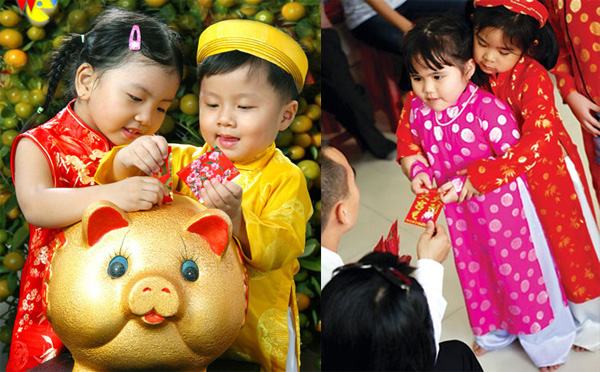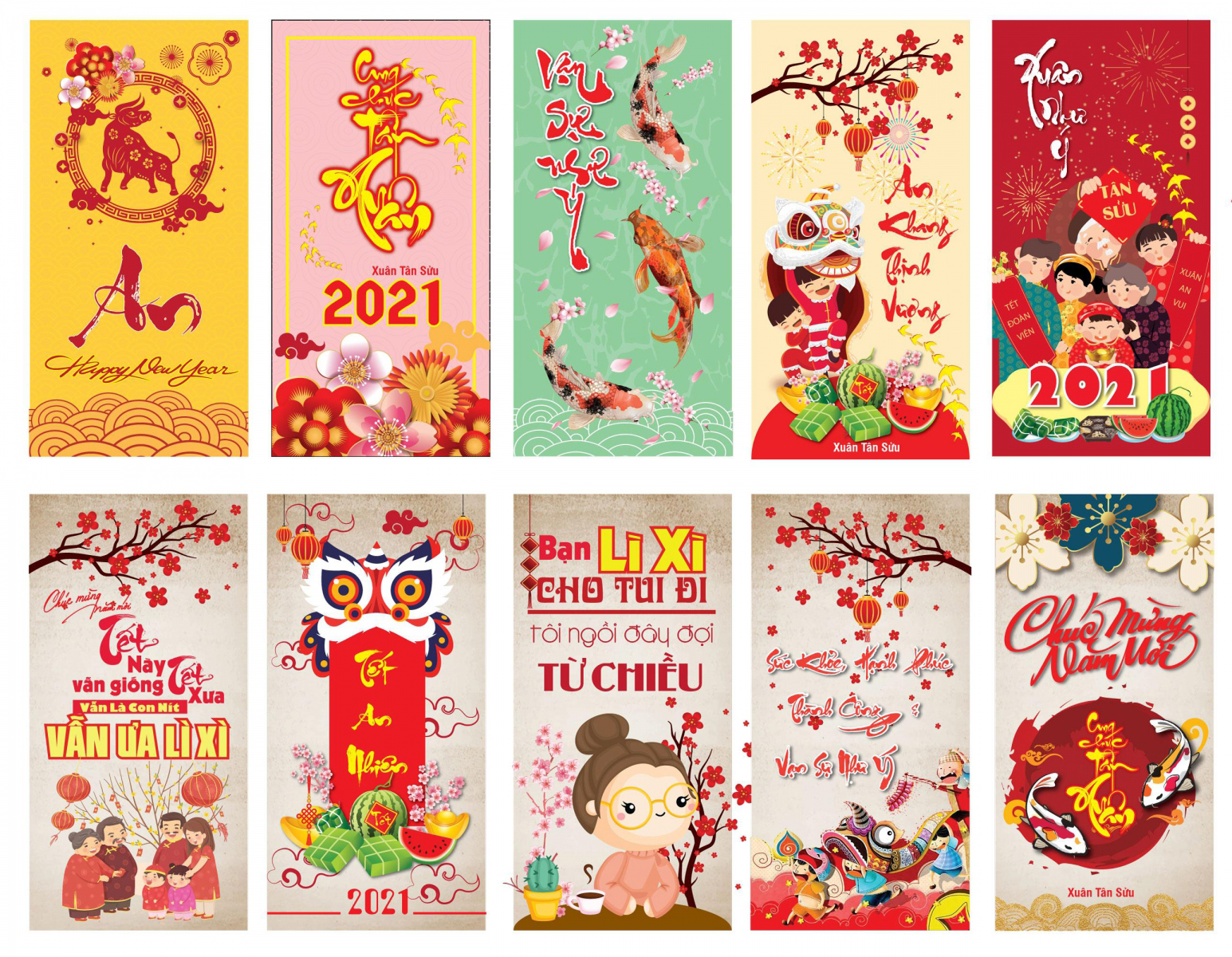"Li xi" - Lucky Money for Tet
Visiting Vietnam on the very first days of Lunar New Year, tourists may feel curious when seeing children are extremely happy and excited about receiving tiny red envelopes from adults. What are those envelopes and is there anything inside? The answer is quite simple. It is “li xi” (Southernly called) or "tien mung tuoi" (Northernly called)- or lucky money, a traditional custom which is very popular not only in Vietnam but also in other Asian societies.
Coming from a folklore
The convention of giving “li xi” has its roots in the folklore about the ogre called Tuy. Once upon a time, living in a huge peach blossom tree in the East Sea were all evil spirits on Earth. While being kept inside the tree and controlled by deities, they always tried to escape and harmed people. However, on New Year’s Eve, as the deities had to gather together at the Heavens, Tuy would appear, rubbing small children’ head to make them burst into loud wails and get high fever. Thus, the whole family had to stay awake all night to protect the children from the ogre.
 Photo @vietnamchik.com
Photo @vietnamchik.com
However, some Deities while once stopping by a village had turned themselves into gold coins. Parents covered those coins in red cloth and placed under a child’s pillow. Later, when Tuy came, the coins sparkled and drove it away. Good news quickly spread out all over the country, and from that time on, Vietnamese have had the tradition of giving small children lucky money in red envelope on the first day of Lunar New Year.
The meaning behind the tale
“Li xi” occupies an indispensable part in Vietnam’s customs of Tet Festival, especially with children, as they will remember the fondest memories about Tet as the beginning of a wonderful year. According to a dictionary published by the Vietnamese Institution of Linguistics, “li xi” means “Giving money to children to welcome the new age on the first day of Lunar New Year”. It is a small amount of money that can bring good fortune to the upcoming year. However, “li xi” is not limited only on the first day, but can even last to the 9th or 10th day of Tet Festival, and given when the adults first met the kids.
 Photo @phmt.vn
Photo @phmt.vn
Besides the money, the tiny red envelope also has its own meaning. It represents the secrecy and privacy to avoid comparison; as adults want the children regard the money as the gift of New Year, instead of being jealous of receiving less than other kids. The red color, the most popular color appearing in Vietnamese festivals, signifies the prosperity and great luck according to Asian’s beliefs. “Li xi” is also the symbol of flukes, since the more “li xi” a person gives or receives, the more flukes he will gain.
Various types of red pockets
In the morning of the first day of Lunar New Year, children and parents will visit grandparents’ home, wishing for a happy new year and great health, showing respect and gratitude, and giving gifts. After that, it is grandparents and adults’ turn to give children lucky money to welcome their new age.
 Photo @inthanhdanh.com
Photo @inthanhdanh.com
“Li xi” tradition has been preserved until today. A red envelope with some new notes carries Vietnamese’ hope for children to “eat more, grow rapidly”, to study well and to have a delightful year ahead.

Folk Games During Tet Holidays
In the country area, Tet is often a holiday to celebrate with games, folk singing and village feasts. Get to know some of the most popular communal games during Tet holiday.

Visiting Pagodas On New Year Days
Together with the festive atmosphere Tet brings to Vietnam every year, the event also the best time of the year for Vietnamese to show their religious belief and traditional custom. Among them, visiting pagodas on the first days of the year has long been a lofty tradition.

Do and Don't When Xong Dat
Tet Nguyen Dan- the biggest festival of the year- plays an extremely essential role in Vietnamese’s beliefs and culture. Among many complicated religious rituals performed in this occasion, “xong dat” (first visit to a home in a year) is believed to decide the fortune of the host for the whole year.











